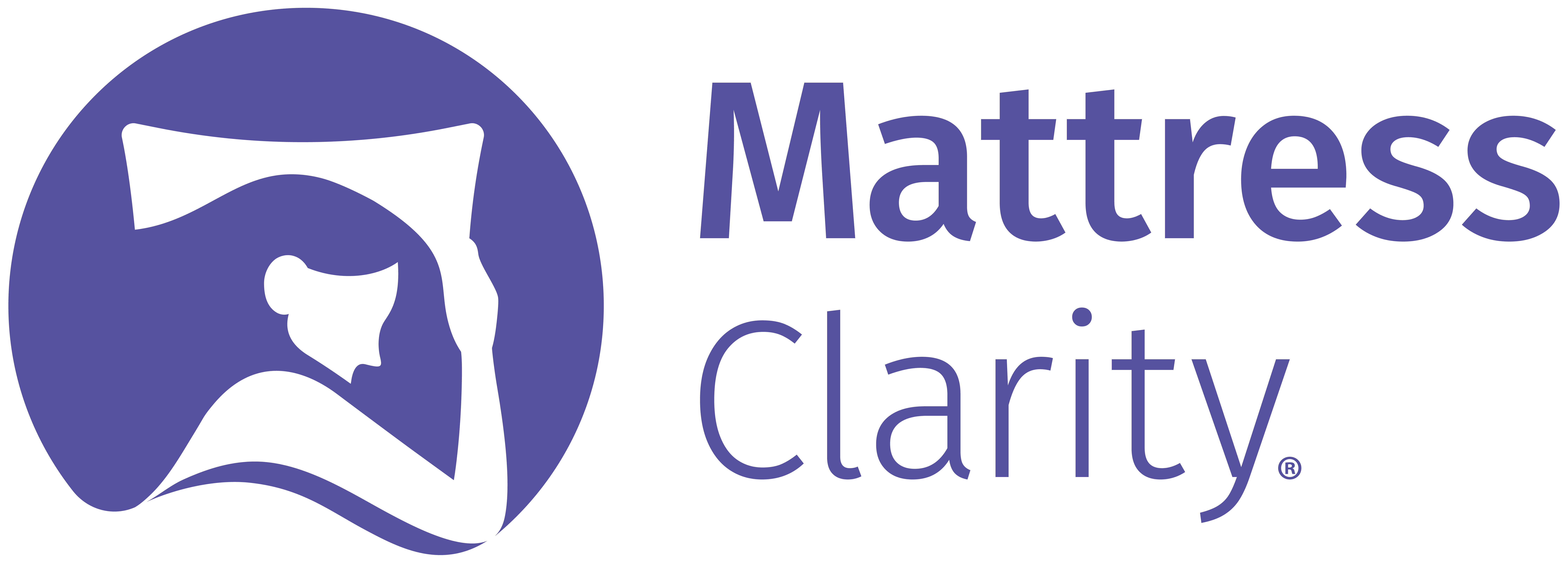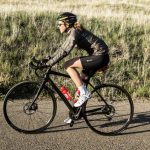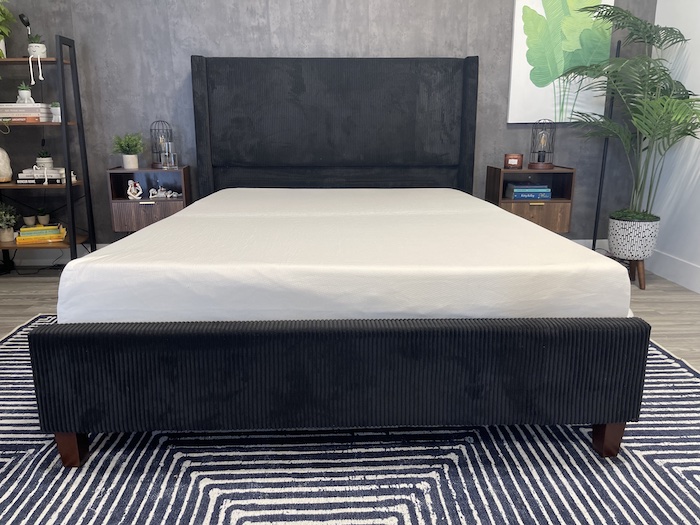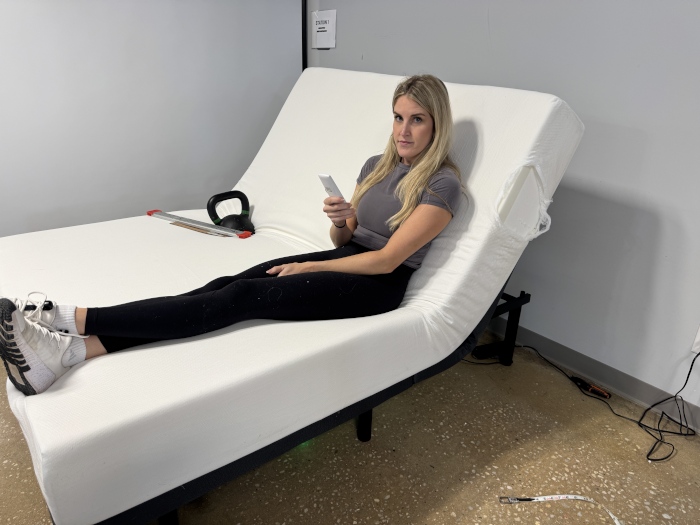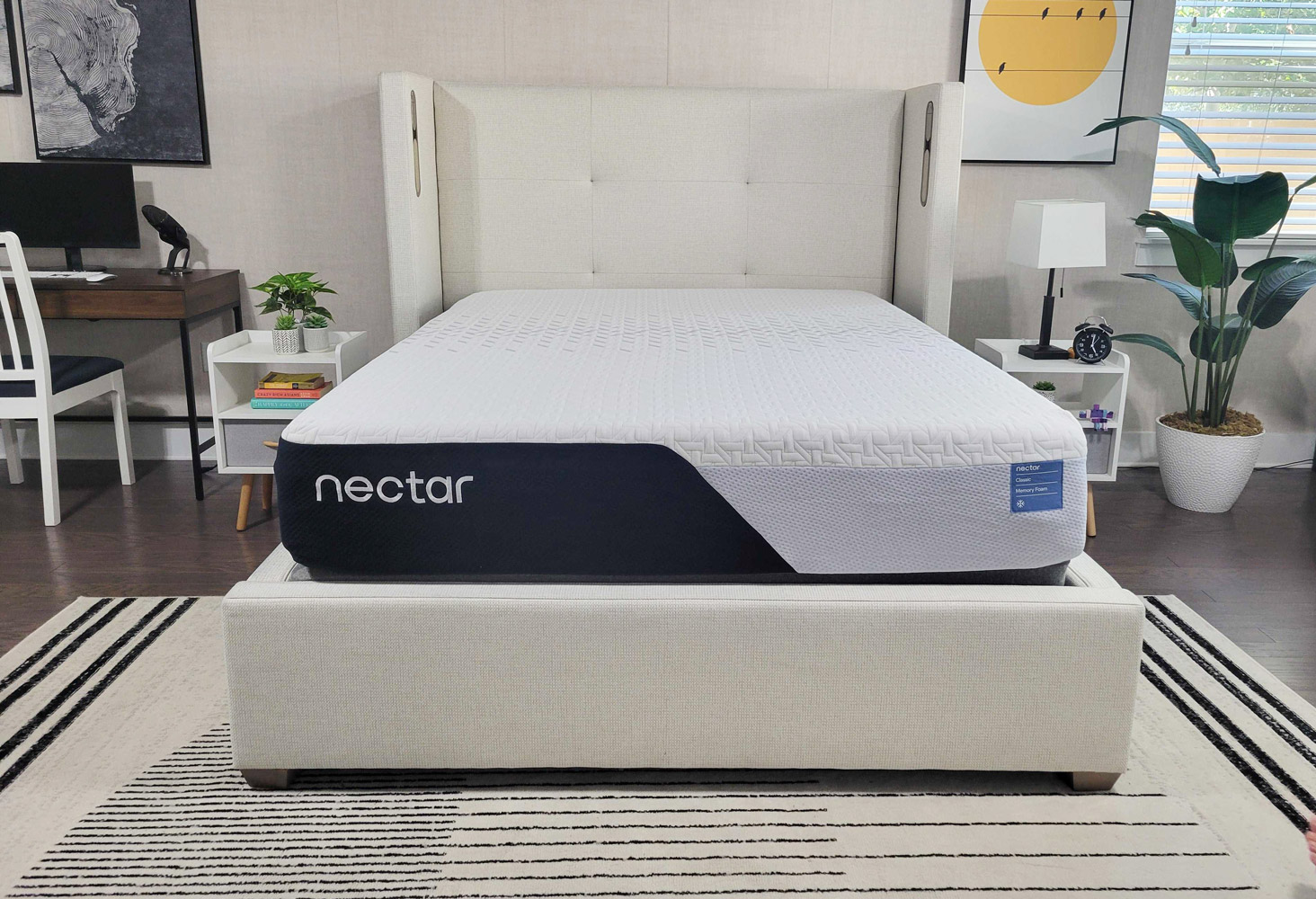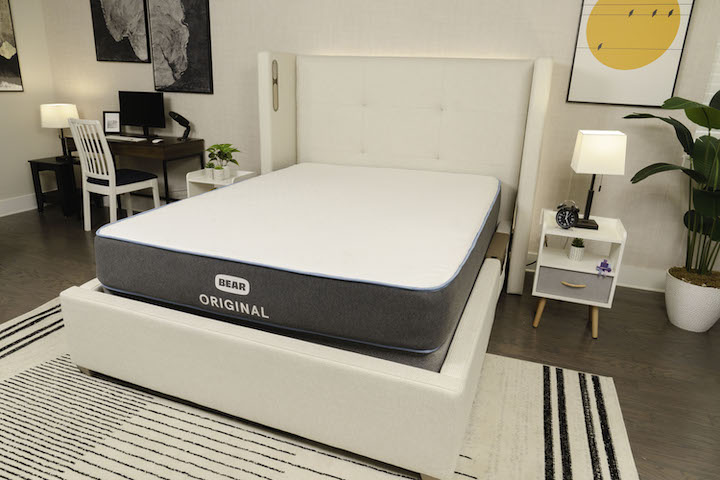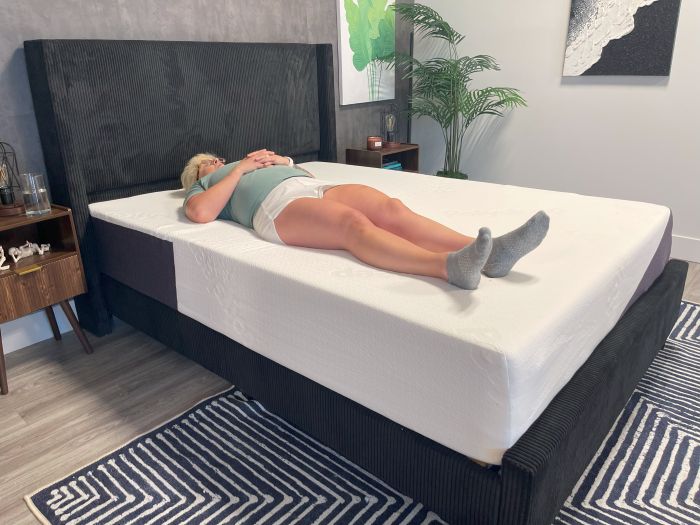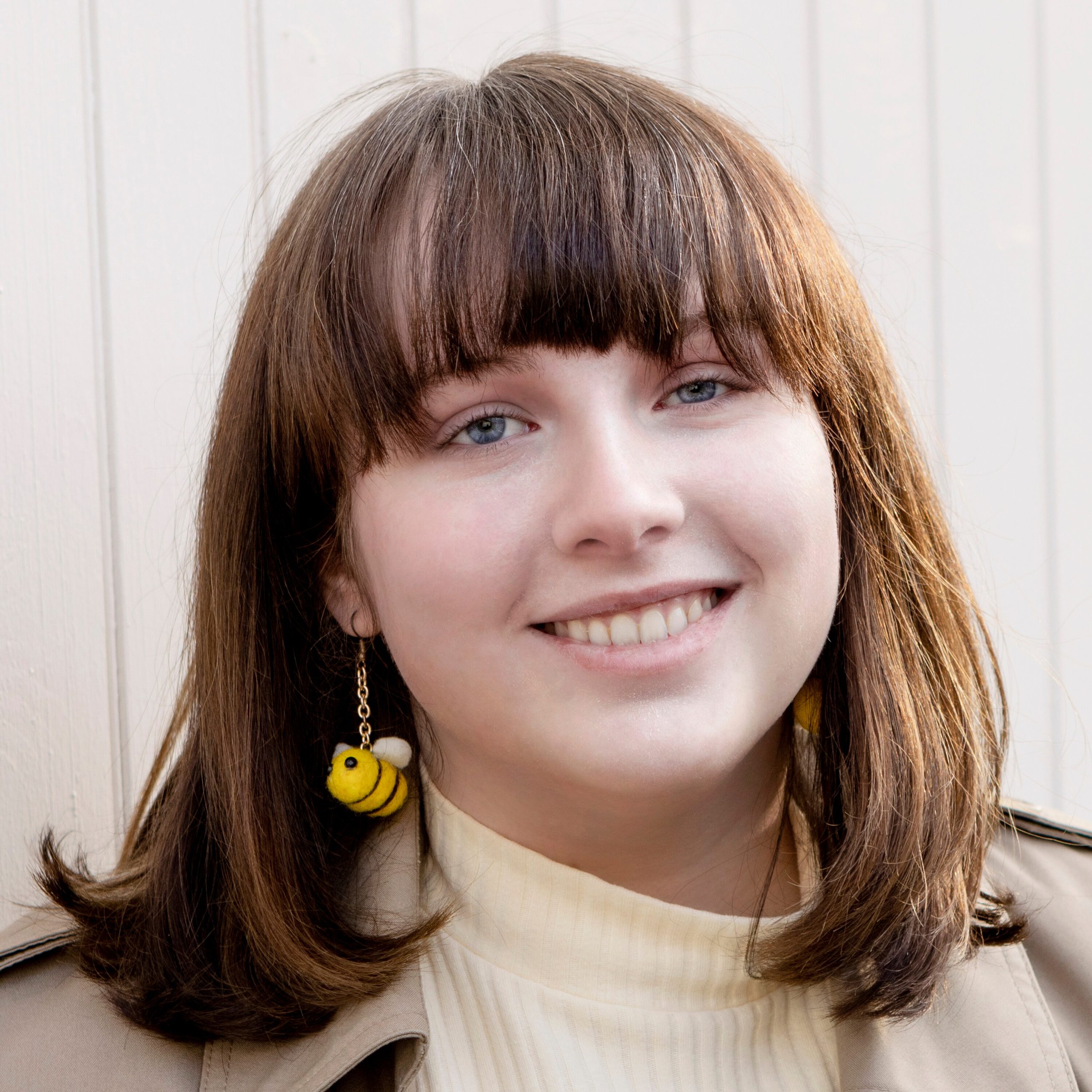Memory foam mattresses are one of the most popular options out there, renowned for their affordability and simple yet effective comfort. When you’re looking for a budget option, though, you have to be extra-careful that you’re getting a truly quality product. That’s why we decided to review Polysleep’s Sierra mattress, touted by the brand as a prime pick for the value shopper.
In order to see if this Canadian memory foam mattress lives up to its claims, we put it through our rigorous evaluation process and enlisted the help of Dr. Raj Dasgupta, MD, FACP, FCCP, FAASM, for input from a medical perspective. We’ve been reviewing mattresses for seven years, and our team has tested more than 500 in this timeframe. Our efforts have helped 5,919 satisfied customers find their new favorite mattress in 2024 alone — and more than 35,000 shoppers in the years we’ve been in operation.
Ready to join the ranks? Check out the Polysleep Sierra, a no-frills foam mattress with a supportive feel, plus a bit of cushioning at the surface. If you sleep on your back, share a bed with a partner, or toss and turn throughout the night, this bed might be the one for you. Still unsure? Continue reading my Polysleep mattress review to find out more need-to-know information about this bed.
Looking for affordable foam? The Polysleep Sierra has you covered. This Canadian-made mattress is made up of two simple foam layers, one for pressure relief, and another for support. The result is a balanced, medium-feel bed that works best for back sleepers. Like most foam beds, it absorbs motion, but it also has a more responsive feel that should appeal to sexually active folks and combination sleepers. Because of its super-thick support layer, we wouldn’t recommend it to folks over 230 pounds, though, as well as some side sleepers of a lighter weight.
Polysleep Sierra Mattress Performance: Our Overall Rating
At Mattress Clarity, we put each mattress we review through a series of tests designed to evaluate every aspect we can think of, including the quality of construction, how it performs, and even the policies that come with it. We rate these categories out of 5, tallying them up to reach a final overall rating for the mattress itself.
The Polysleep Sierra earned its highest scores in edge support (4/5), motion isolation (4/5), and response (4.5/5), contributing to its overall score of 4.1 out of 5. For more information on these categories, you can hover over the icons below to find out what each metric means. Or you can read on further for our detailed description of how the mattress fared in every test.
I Recommend the Polysleep Sierra For…
- Back sleepers – The Polysleep Sierra fared best for back sleepers, thanks to its supportive feel.
- Couples – The Sierra earned high scores in both motion isolation, edge support, and response, all of which should appeal to couples who share a bed.
- Budget shoppers – You can get a queen-size Polysleep Sierra for just $690, which is a fair price for an all-foam mattress.

I Don’t Recommend the Polysleep Sierra For…
- Particularly hot sleepers – Mixed results in our cooling test mean we can’t recommend this all-foam mattress for temperature regulation.
- Some side sleepers – Side sleepers looking for deep sinkage will want to choose a different mattress, as the comfort layer on the Sierra can provide some pressure relief, but it’s rather thin.
- Sleepers over 230 pounds – These sleepers will likely sink in too far and bottom out on the firm support base.
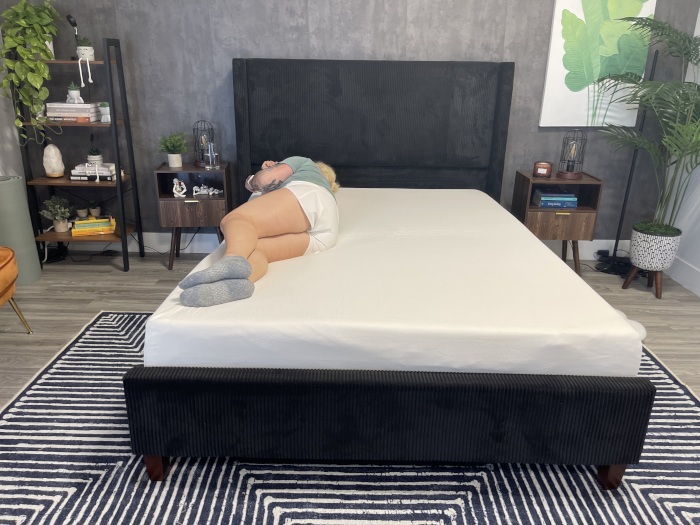
How Firm Is the Polysleep Sierra Mattress?

At Mattress Clarity, our firmness scale goes from 1 to 10, with 1 being the softest and 10 being the firmest. Most beds on the market have a medium-firm feel, or about 6.5/10 on our scale, since this firmness has a balance of support and a touch of softness that makes it a fine option for most sleepers.
The Polysleep Sierra came in just a touch softer at a 6/10. I’d call this closer to medium than medium-firm. Our testers noticed a bit more cushioning from the upper layer, but the dense support underneath gave this foam bed a lifted feel, rather than that traditional memory foam sink.
How Well Did the Polysleep Sierra Perform?
We perform a number of tests on a mattress, both subjective and objective. Most are measured in scores out of 5, but that might not be enough to satisfy the curious shopper. For your perusal, we gathered up the averages for all the mattresses we’ve tested so you can see how the Sierra compares to the competition.
| Test | Performance | Average |
| Firmness | 6/10 – Medium | 6.7/10 – Medium-Firm |
| Side Sleeper Comfort | Unpleasant | Good |
| Back Sleeper Comfort | Excellent | Good |
| Stomach Sleeper Comfort | Good | Good |
| Pressure Relief | 3.9/5 | 3.9 |
| Edge Support | 4/5 | 4.1 |
| Cooling | 3/5 | 3.8 |
| Motion Isolation | 4/5 | 3.9 |
| Response | 4.5/5 | 4.3 |
| Sinkage Depth | 2.75” | 3.12” |
| Sinkage Rating | Moderate | Moderate |
| Bounce Height | 19.5” | 17.89” |
| Bounce Rating | High | Moderate |
| Noise | 5/5 | 4.5 |
| Sex | 4.5/5 | 4.3 |
| Trial Period | 2/5 | 4.2 |
| Warranty | 3.5/5 | 4.6 |
| Unboxing & Moving | 5/5 | 4.3 |
| Off-gassing | 3/5 | 4.2 |
How Does the Polysleep Sierra Feel for Different Body Types and Sleeping Positions?
Per our chief medical advisor Dr. Raj Dasgupta, “A sleeper’s preferred position and body type has a significant impact on what type of mattress will be best suited for their needs.” Since there’s no one-size-fits-all mattress, we take a look at how each mattress performs for each weight category and sleeping position.
When it comes to the Polysleep Sierra, our testers found the most comfort in the back-sleeping position. The Sierra isn’t as thick as other mattresses we’ve tested, so while it has an initial softer feel on top, you’ll immediately feel the support underneath. That’s why it may not be the best option for side sleepers. Stomach sleepers may find this profile supports them without letting their hips fall out of alignment. If you weigh over 230 pounds, though, I think you might find this mattress too uncomfortable. You’ll likely sink right through the comfort layer and bottom out on that super-firm support foam.
| Sleeper Weight | Side Sleepers | Back Sleepers | Stomach Sleepers |
| Light (under 130 lbs) | Good | Excellent | Excellent |
| Average (130-230 lbs) | Good | Excellent | Good |
| Heavy (over 230 lbs) | Unpleasant | Good | Unpleasant |
Average-Weight Tester – 5’4”, 175 lbs
“The top is super soft, but then you’re almost immediately met with a plank-like layer. However, the longer I was on it, the more I settled in.” – Sosha Lewis, tester, writer, and certified sleep science coach
Lightweight Tester – 5’5”, 120 lbs
“I felt very comfortable on my back. It conforms to my body and I didn’t feel any pressure. I think after heavy use of this mattress, the foam won’t be as responsive and might create a dip if you stay in one spot for too long.” – our expert in-house tester
Polysleep Sierra In-Depth Test Results
Pressure Relief
Memory foam mattresses are advertised as a popular choice for pressure relief, but you might still be wondering what that means and if it pertains to your sleep habits. Dr. Raj Dasgupta explains it as such: “A mattress that relieves pressure will have enough soft cushioning to cradle common pressure points like the neck, shoulders, hip, and lower back, which should prevent discomfort and pain from occurring in these areas.”
Pressure relief is most important for folks who sleep on their back and side, as the aforementioned places on their body will often dig into the bed’s surface. How pressure-relieving a mattress feels is also dependent on your body type, so when we test this metric, we try to gather testers who represent multiple weight categories.
For testing, we place a specialized mat on the surface of the mattress. Using thermal imaging, the mat records where pressure builds up as a tester lies down on the mattress in each position. The result is a color-coded map of their body. Blues and greens mean low pressure, which means less pain or discomfort, and reds and yellows are signs of the opposite, high pressure and more potential for discomfort. We also ask our testers to describe how they feel on the mattress and give a rating out of 5.
Our lightweight tester first tried out side sleeping on this mattress. She noticed that her hips dipped a bit lower than her shoulders, but added, “nothing felt painful.” She commented on slight pressure in her lower back, also calling it “nothing too discomforting,” but there is the possibility that this could lead to back pain over time. Out of the box, she thought that it felt comfortable but was worried about this mattress showing more signs of sinkage over time, which may affect its ability to relieve pressure. Still, she gave the side-sleeping pressure relief for lighter sleepers a 4/5 score.
On her back, she thought it was a bit more comfortable. “My hips felt aligned to my spine and my back was equally supported,” she explained. She noted that those with a larger frame might experience more sinkage and possible discomfort but recommended the mattress for lightweight back sleepers. It earned another 4/5 rating for back-sleeping pressure relief.
Our average-weight tester was Sosha Lewis. She admitted that she had mixed opinions about this mattress. “I still didn’t really like it, but I don’t necessarily feel a lot of pressure either,” she said. She wasn’t a fan of the bed’s profile, and how it started out soft but immediately transitioned into the firmer support layer. She ultimately rated it at a 3.5/5 for side-sleeping pressure relief but added that this rating could go lower or higher depending on a sleeper’s personal preference.
Switching to back sleeping, Sosha immediately felt an improvement. “The back pressure relief was good,” she said. “It even filled in the gap at my lower back.” But again, she didn’t enjoy the feeling of sinking through the top layer, and wanted more cushioning from this bed. She ultimately gave pressure relief for this position a 4/5 score.
This led to the overall pressure relief for the Sierra mattress coming in at 3.9/5, which isn’t much to write home about. If you purchase this mattress and decide you need more pressure relief, you can always add a soft mattress topper to enhance the cushioning comfort layer. Dr. Raj Dasgupta often recommends memory foam as one of the best pressure-relieving materials.
Edge Support
If you’re like me and end up sleeping with one leg over the side of the mattress, you’ll want a bed that excels in edge support. A mattress with reinforced edges won’t sag or buckle when bearing weight. This feature can be important for the reason I mentioned, but strong edges can also benefit folks who need assistance getting in and out of bed, like older adults. This is why when we test edge support, we look at how the mattress performs when we sit and lay down right at the perimeter.
Our in-house tester performed the edge support tests for the Sierra, and she wasn’t too impressed. While the mattress didn’t show much sinkage beneath her weight, she still didn’t feel very secure. “There was very little edge support, and I felt like I could easily slide off,” she said. She wouldn’t recommend it for folks with mobility concerns.
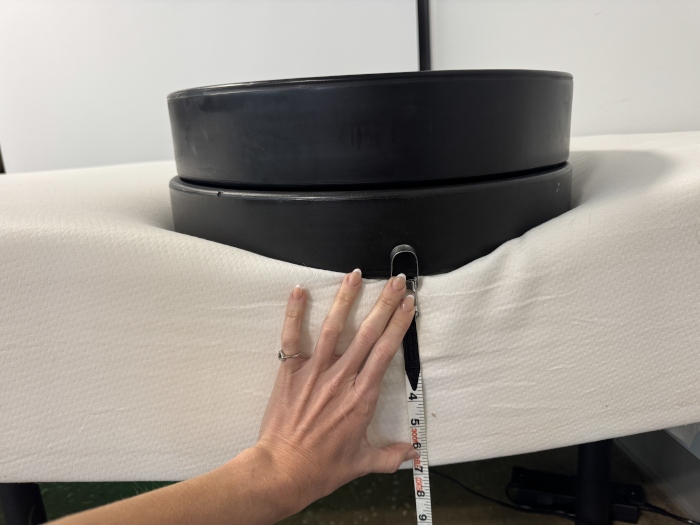
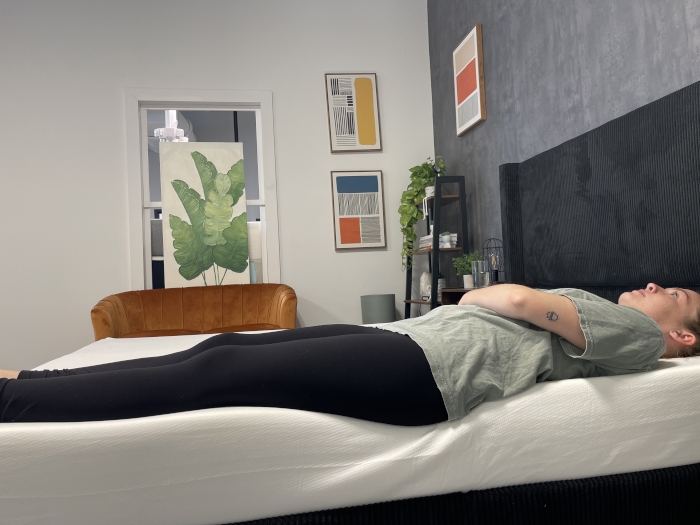

Lying down, it wasn’t too different. “I felt like I could roll off easily as I switched from my back to my side and readjusted,” she said. “My lower half sank down a lot more than my shoulders which made me feel like I was sliding off feet-first.”
We also ask testers of different body types to take a seat on the edge of the mattress to see how much it dips, or we simulate it with weights. During this test, the edges never dipped more than 2 inches, which is a discrepancy compared to our tester’s results. It’s the reason behind the bed’s higher edge support score, 4/5. While the edges may not be saggy, the construction of the mattress doesn’t appear to give security in precarious positions at the perimeter.
Cooling
Foam mattresses usually aren’t known for their cooling capability, as their dense layers don’t allow for the same amount of airflow as a hybrid or innerspring mattress. Manufacturers like Polysleep try to counteract this by designing foams with larger air pockets to counteract the material’s heat-trapping effect. But is it enough to make this bed Arctic-level cool?
To test temperature regulation, we use a thermal gun to measure the surface temperature of a mattress in two instances: first, before anyone has touched the bed, and a second time after a tester has rested on it for about seven minutes. We generally see 6- or 7-degree increases as a sign of fairly good cooling and give them a score of around 4/5.
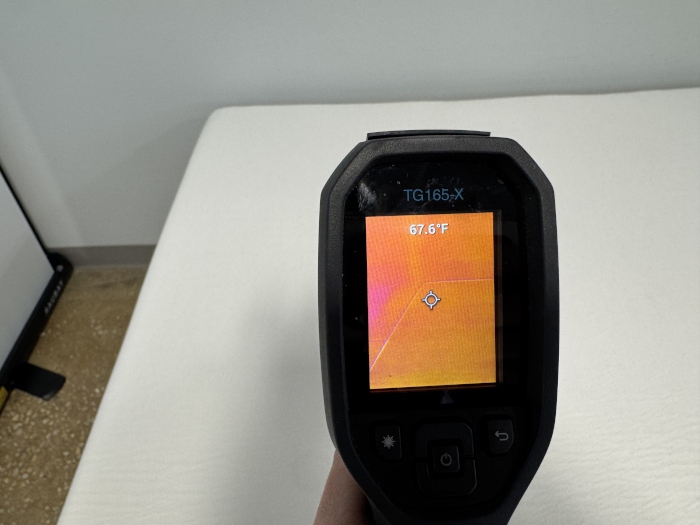
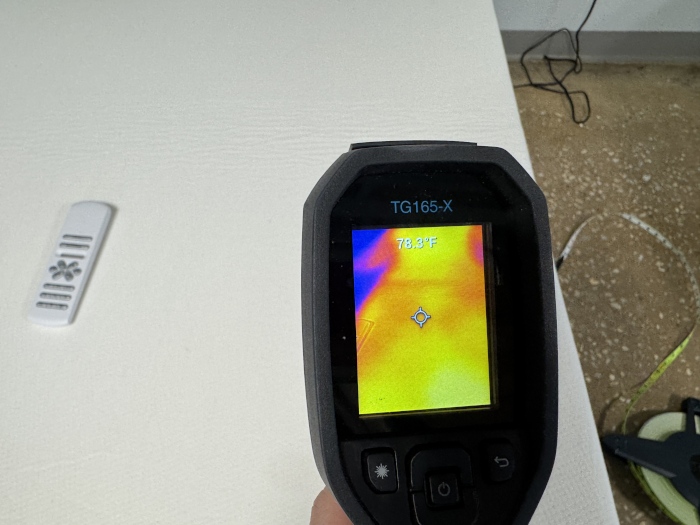
The initial temperature for the Sierra’s surface was 67.6 degrees. After seven minutes, our tester recorded that it has risen to 78.3 degrees, a 10-degree increase. This is a bit higher than the previously mentioned average, and the reason why the bed earned a 3/5 temperature regulation score.
Our tester thought the mattress felt “pretty average for cooling,” and agreed with the measured temperature increase. “The mattress remained temperature neutral for the length of time for the test, and after I got up, it cooled down very quickly,” she said. “For an all foam mattress without any wow-factor materials or cooling technology, I am impressed.”
Even with our tester’s comments, I’m hesitant to call the Sierra one of the best mattresses for cooling down, but it may not be as prone to overheating as other foam beds.
Motion Isolation
Light sleepers, have you ever been awakened by your partner getting out of bed or simply breathing too deeply? If the answer is yes, you’re going to want a bed that has great motion isolation. Motion isolation refers to how well a mattress absorbs these movements, preventing them from traveling across the surface and disturbing whoever is sleeping on the other side.
We test motion isolation in two methods. First, we place a glass of water on one side of the bed. A tester will get in on the other side and start moving around, switching positions and getting in and out of bed. We look at how the water and the glass behave to determine the level of motion transfer.
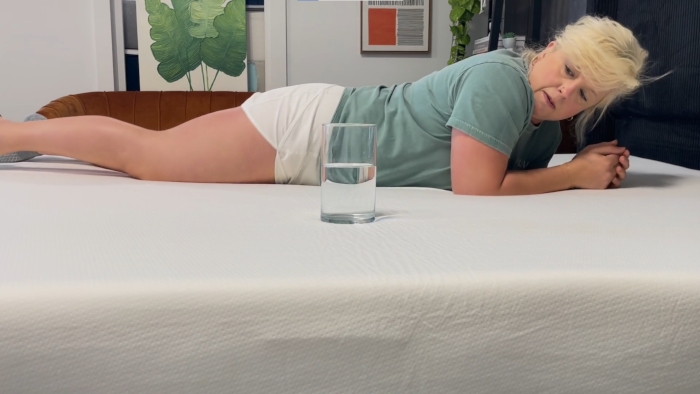
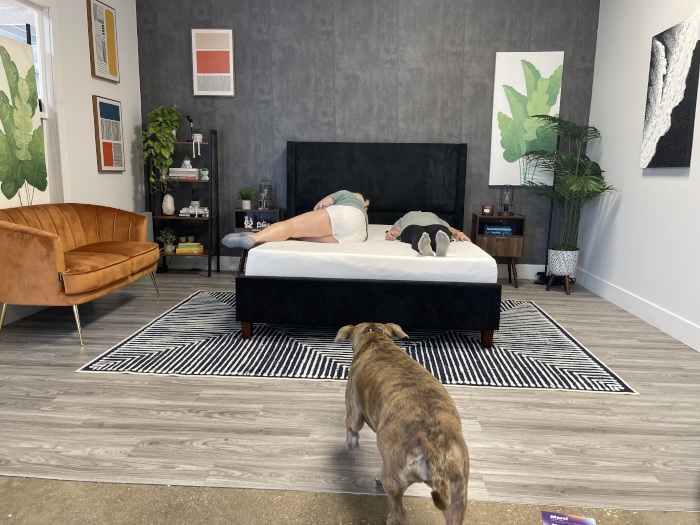
My fellow tester Sosha Lewis was in charge of the motion isolation tests. For the water glass test, she was impressed by how stable the glass remained. “There was a fairly noticeable slosh when I entered the bed aggressively, but not when I got in like I would if I was trying to wake a partner,” she explained. Aside from these aggressive movements, the waters were calm, so she gave this test a score of 4/5.
The second test required help. Sosha had her fellow tester get in the mattress blindfolded, pretending to be her sleeping partner while she moved around on the other side. “My partner could feel when I plopped down but not when I sat down,” Sosha said. “She could feel me when I made aggressive switches but not more gentle rolling.” Since these results were similar to the water test, Sosha also rated the motion isolation for this test at another 4/5.
The overall motion isolation score came out to 4/5. This means it should be a great option for couples, including light sleepers.
Response
A responsive mattress will “bounce back” into shape when you sit, lay, or press down on it. It’s a sign of how easy it will be to move around on top of, which should appeal to combination sleepers or sexually active folks. Most all-foam mattresses aren’t known for responsiveness, as traditional foams tend to be slow-moving and cause sleepers to sink further into the bed. The Polysleep Sierra doesn’t follow the mold, though.
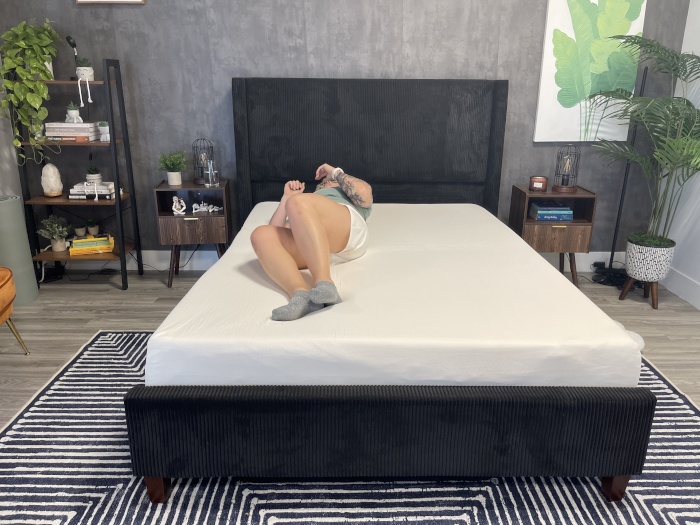
When Sosha moved around on the bed’s surface to test its responsiveness, she found it to be relatively easy. “You sink in a little but the support layer catches you and makes it easy to switch back and forth between positions,” she said. She rated overall responsiveness at a 4.5/5. If you’re looking for a springy foam mattress, the Sierra won’t disappoint.
Sinkage: Moderate
Initially, the word sinkage might conjure negative connotations. But if you like feeling swaddled or “hugged” by your mattress, you might want a bed with plenty of sinkage. On the other hand, if you prefer a bed that’s easy to move around on with a more “on top” feel, then you’ll likely want less sinkage.
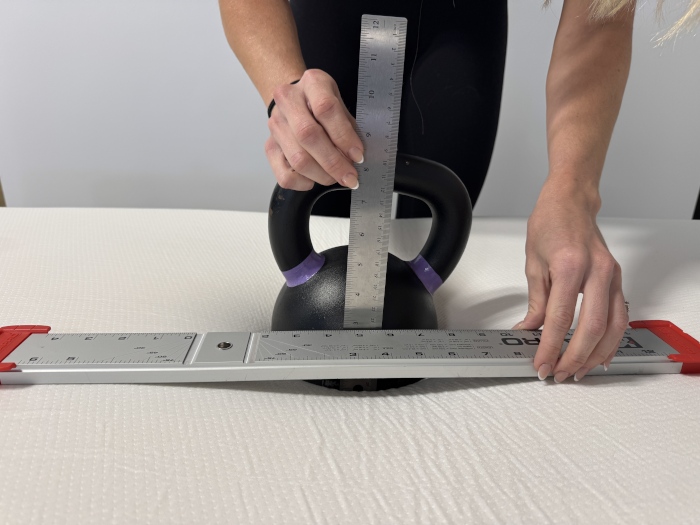
To measure a mattress’s sinkage depth, we take a weight and place it on the bed’s surface. We then measure the hip using a ruler. For the Polysleep Sierra, we recorded a sinkage depth of 2.75 inches, which is just a smidge lower than the average for every bed we’ve tested, 3 inches. This moderate sinkage means this bed should have a balanced feel, not too doughy, but also not unyielding in its lift.
Bounce: High
Bounce might be an important metric to consider if you want a bed that prioritizes ease of movement. Bouncier mattresses are better for switching positions, sex, and, of course, jumping on the bed.
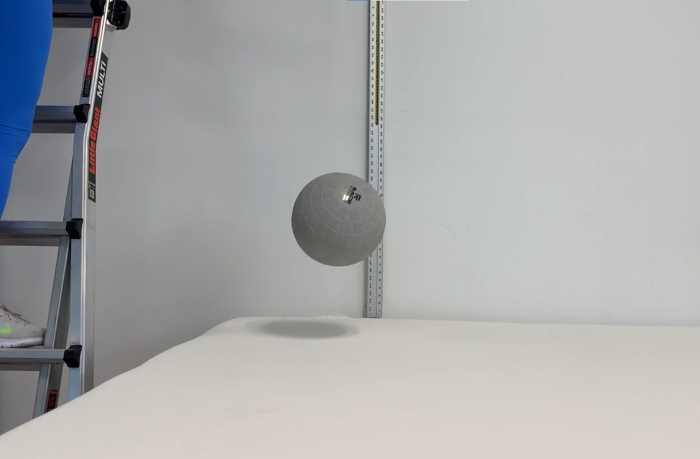
We measured bounce by dropping a medicine ball from six feet above the mattress and using a yardstick to measure how high it rebounds. The Polysleep Sierra had a bounce height of 19.5 inches, a couple inches higher than our recorded average (17.8 inches). We’d rate this as high bounce, which means if you’re looking to switch positions or even launch yourself across the surface of this bed, it shouldn’t be too difficult.
Noise
The last thing you want is a loud mattress, especially if you are sensitive to noise. When we test a mattress, we pay special attention to whether or not it makes any egregious sounds. The Polysleep Sierra was quiet as a mouse and didn’t make any creaking noises or hissing when the air was released from the foams. We don’t expect it to start making noise either, so we rated this category at a 5/5.
Sex
A good mattress for sex will excel in three key areas: response (for seamless repositioning), edge support (to make full use of the bed’s surface area), and noise (so no sound distracts from the main event). When we come up with our sex score, we take a look at how the mattress performed in these categories, averaging the scores together.
The Polysleep Sierra performed well in each. Its lowest score was in the edge support category, 4/5, but we don’t think you’ll be slipping and sliding straight off the mattress. For a foam mattress, it’s pretty bouncy, and there shouldn’t be any squeaking to detract from the matter at hand. Overall, it should be a great mattress for sex-positive shoppers.
Adjustable Base Compatibility
You may have heard of an adjustable base, which allows you to independently maneuver the head or foot of your bed into whatever position you desire. Most mattresses are advertised as adjustable-base compatible, but we’ve found this isn’t always the case. So we test every mattress on an adjustable base in our studio.
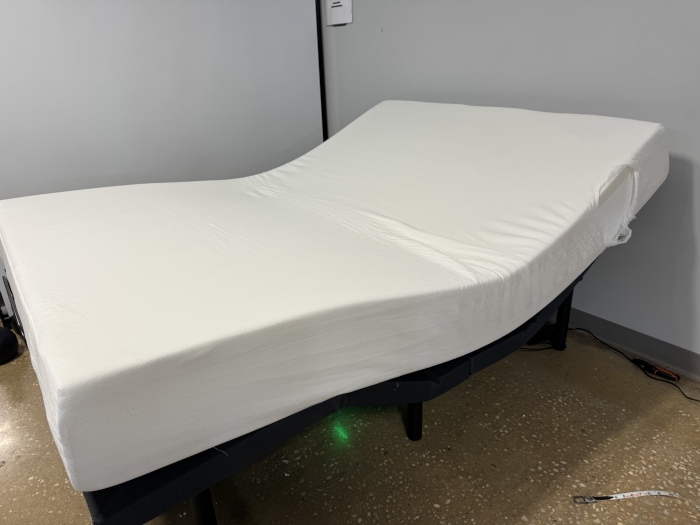
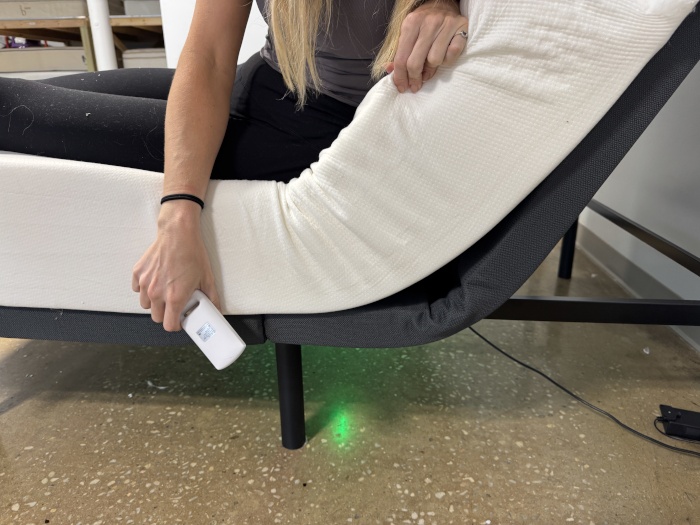
The Polysleep Sierra actually performed well in this test. Our tester noted that its thinner profile seemed to help it better conform to the base. Its foam construction is also malleable, bending easily when the foot of the bed is lifted. The only issue our tester found was that the very bottom of the mattress wouldn’t always remain completely flush in this position, but it wasn’t enough to affect the overall feel. If you’re worried about it properly conforming, always wait to move your base until everyone is in bed, as the more weight is on it, the better it’ll stick to the frame.
Polysleep Sierra Customer Experience Scores
For some folks, customer service and purchasing experience are just as important as the product you receive. Let’s go over the policies offered with this mattress, as well as what the setup process looks like once it arrives at your home.
Trial Period
Polysleep offers a 100-night sleep trial with its mattresses. This is fairly standard for most mattress manufacturers, but pales when you consider that some brands offer 120 nights or even year-long sleep trials. More than that, if you decide to return your Sierra mattress, you aren’t guaranteed a full refund. Polysleep also charges a return fee and has limitations on which areas and territories can take advantage of the sleep trial. Based on all this, we rated the sleep trial at a 3.5/5.
Warranty
The Sierra mattress comes with a 5-year limited warranty. Since most mattresses are expected to last anywhere from 7 to 10 years, I was surprised to see such a short warranty. Most brands offer 10-year warranties, if not 15-year or lifetime ones. Therefore, I only gave the Sierra a 2/5 rating for warranty.
Unboxing and Moving
The Polysleep Sierra mattress will arrive at your door compressed in a box, just as it did in our studio. Our in-house tester was able to unbox the mattress on her own, only encountering some initial resistance from the first plastic layer. “I had no problem moving the box around and lifting the mattress onto the bed frame,” she said. She rated the unboxing and moving experience at a 5/5.
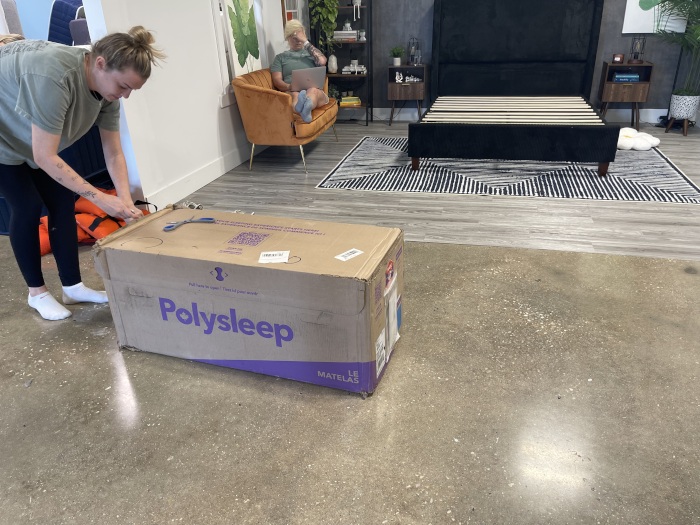
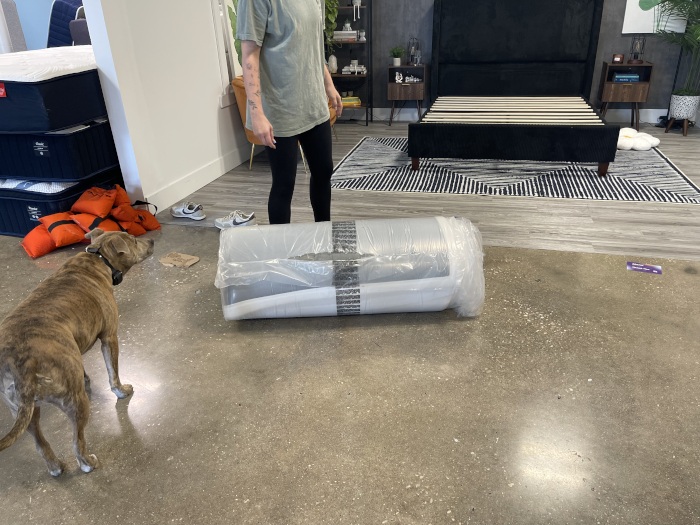
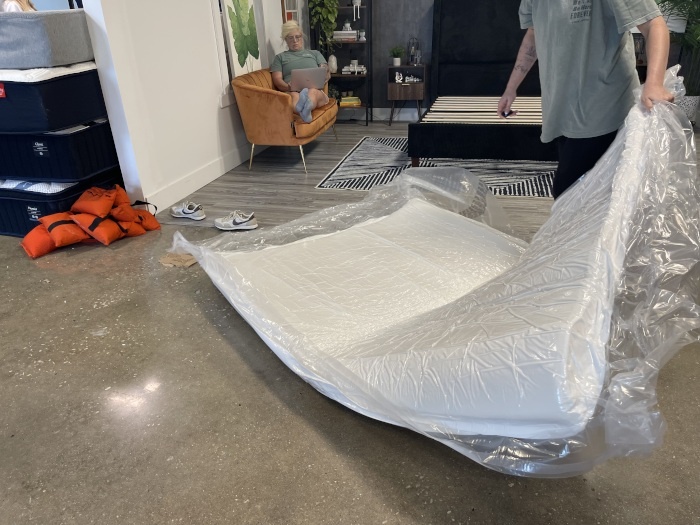
Off-gassing
Off-gassing refers to the chemical or “new mattress” smell that comes with unboxing a bed-in-a-box. This is because these beds are usually shipped straight from the factory and don’t have time to air out before undergoing compression. When our tester unboxed the mattress, she noticed a strong smell immediately. We also tested the Polysleep Luna, though, and she found the smell less offensive than that bed. “Still, it lingers, and will probably take a day or two to fully go away,” she noted, rating the bed’s off-gassing at 3/5.
Polysleep Sierra Construction
Now that we’ve gone over how the Polysleep Sierra performed in all our tests, let’s take a look at what’s going on inside this bed.
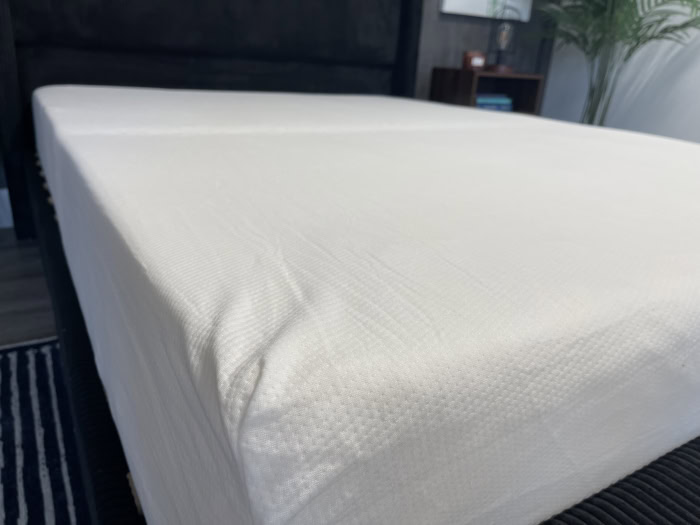
Mattress Height & Weight
The Polysleep Sierra mattress is 9 inches thick, which is on the shorter side but still enough to provide comfort and support. It can weigh anywhere from 41 pounds to 79 pounds, depending on which size you choose. A queen-size Sierra, as an example, will weigh about 61 pounds.
Materials
The Sierra is an all-foam mattress, meaning it’s entirely constructed out of foam layers. All foams used in this bed’s construction are CertiPUR-US certified for low emissions. The bed is also entirely made in Canada.
Layers
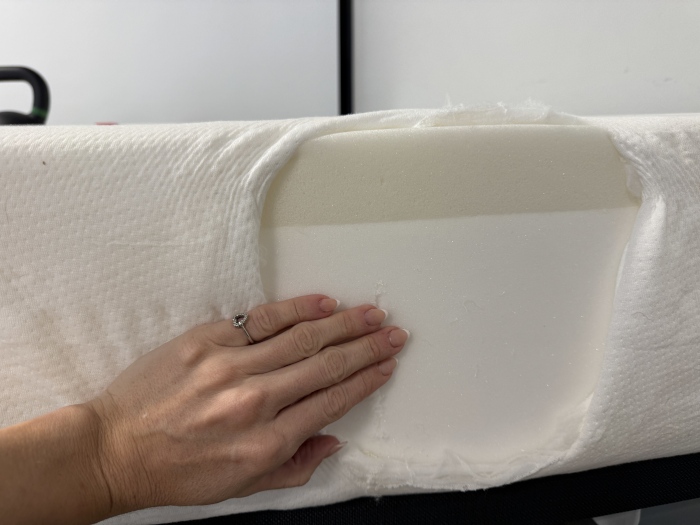
The Sierra is made up of two layers and a cover. A simple 100-percent polyester cover swaddles the entire mattress, which is also removable if you encounter any pesky stains. I’ll note that the cover is not machine washable, and Polysleep recommends putting a mattress protector on the bed to further prevent mishaps.
The first foam layer is an open-cell antimicrobial foam, designed to both relieve pressure and keep air flowing through the mattress surface. Underneath is the foam base, which is a denser foam that’s built for stability and support.
How to Try and Buy the Polysleep Sierra Mattress
Polysleep mattresses are most easily purchased online at the brand’s official site. If you’re wanting to see these beds in person, they’re available at select brick-and-mortar retailers throughout Canada and the United States. Just take a look at the site’s map search, where you can find not just stores, but also hotels and AirBnb rentals that have the mattress in their rooms.
If you can’t try out a Polysleep mattress in person, don’t worry about committing. You can take advantage of the brand’s at-home sleep trial, which lasts 100 nights. Polysleep asks you to wait at least 45 days before making your decision to return. Unlike most brand’s sleep trials, however, you’ll only receive a partial refund. On top of that, you’ll have to pay a flat return fee of about $90.
Polysleep Sierra Prices & Sizes
| Size | Price |
| Twin | $580.00 |
| Full | $645.00 |
| Queen | $690.00 |
| King | $785.00 |
How the Polysleep Sierra Compares
If you’re still waffling on purchasing the Sierra, don’t fret. Here are some other options we like to recommend to all-foam fans, as well as another model by Polysleep that might interest you.
| Rating |
|
|
|
|
|---|---|---|---|---|
| Firmness |
Soft: 6/10
|
Medium-firm: 7/10
|
Medium-firm: 6.5/10
|
Medium-firm: 7/10
|
| Material |
Foam
|
Foam
|
Foam
|
Foam
|
| Cooling |
—
|
—
|
|
—
|
| Best For |
Back Sleepers,
Stomach Sleepers |
Side Sleepers,
Back Sleepers, Stomach Sleepers |
Back Sleepers,
Stomach Sleepers, Hot Sleepers |
Side Sleepers,
Back Sleepers |
|
|
Polysleep Sierra vs. Nectar Classic Memory Foam
The Nectar mattress is another memory foam mattress designed for folks on a budget who still want a quality, reliable product. I tested out the Nectar myself, and I found it to be a touch firmer than what our testers rated the Sierra, coming at 7/10. However, compared to the Sierra, the Nectar has a much more traditional foam feel, with a bit more sinkage that may work better for sleepers who prefer a contouring feel. It also has a cooling cover, which should make it more appealing to hot sleepers.
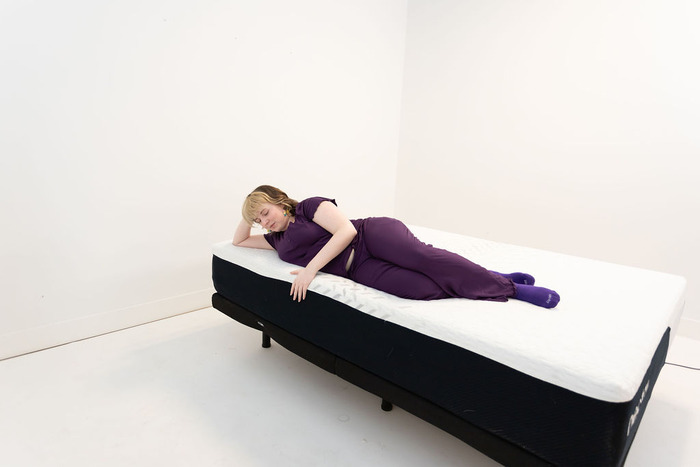
A queen-size Nectar mattress will cost you $552, which is quite a bit less than a queen-size Sierra ($690). Nectar is also more generous with its policies and offers a full year-long sleep trial and lifetime warranty, compared to Polysleep’s 100-night trial and short 5-year warranty.
Polysleep Sierra vs. Bear Original
Another foam mattress we often recommend at Mattress Clarity is the Bear Original. This is another affordable, all-foam bed, though it’s a firm mattress when compared to the Sierra mattress (7/10 with a more lifted feel). Like the Sierra, the Bear also excelled well in both motion isolation and response, but it has the edge over this mattress in terms of cooling and edge support. It might be a better option for hot sleepers or older adults.
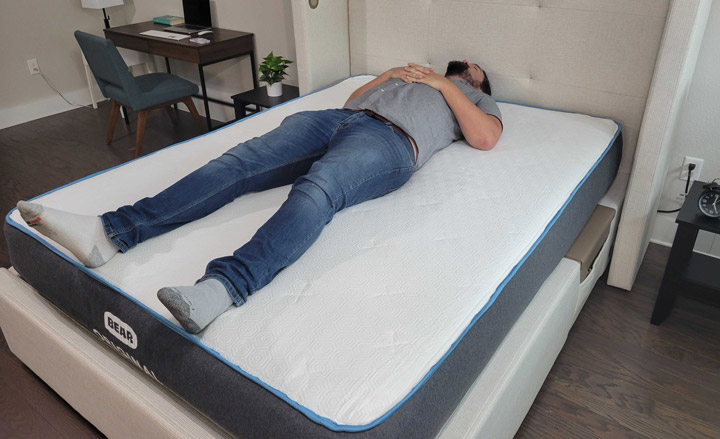
In terms of price, the Bear Original is also a bit cheaper. A queen will cost you only $556, which is over $100 less than the Sierra. The bed is also backed by a lifetime warranty, which is pretty generous when compared to Polysleep’s meager 5-year warranty.
Polysleep Sierra vs. Polysleep Luna
If you’re looking for something with a bit more to offer, you can stay within the Polysleep brand with the Luna model. This is the brand’s most-upgraded model, featuring a few more comfort layers for a thicker profile. It’s also the most expensive; a queen-size Luna mattress will cost you $1,375. The same size for the Sierra is half that at about $690.
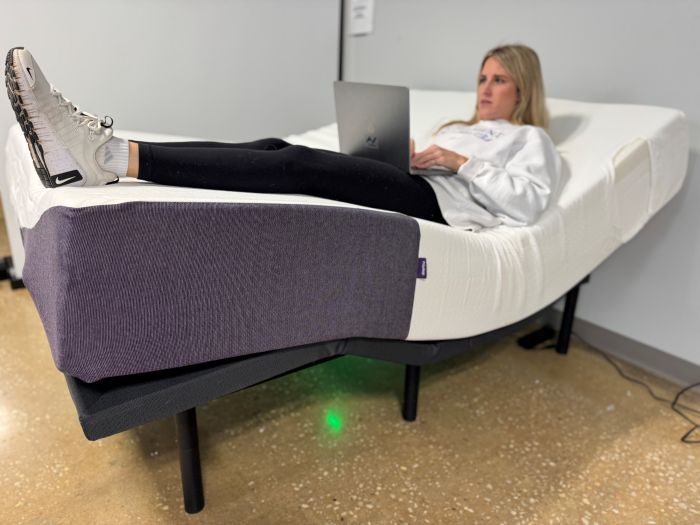
In general, I’d say that these mattresses feel pretty similar—they even scored quite similarly in our tests. The Luna is just a touch firmer at 7/10 compared to the Sierra’s 6/10. This means the Luna might be better for folks looking for firmer support, such as those who sleep on their back and stomach.
Polysleep Sierra Mattress FAQs
Where are Polysleep mattresses made?
Polysleep mattresses are entirely Canadian-made, built and constructed in the brand’s Montreal factory.
What is the difference between Polysleep and Endy?
Both Polysleep and Endy are Canadian mattress manufacturers that make their product in the country. Polysleep specializes in foam mattresses, while Endy offers both a foam mattress and hybrid mattress. Polysleep also ships to the USA, while Endy only ships to Canada and Canadian territories. It may come down to which bed you chose, but both are quality brands with their own pros and cons for each product.
